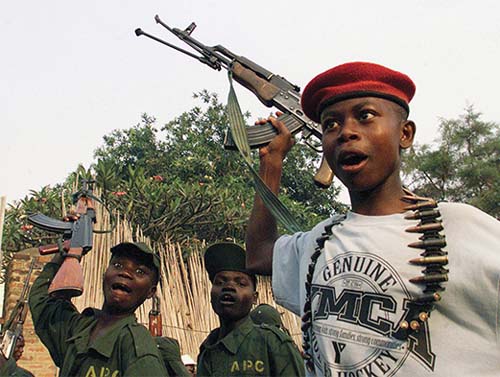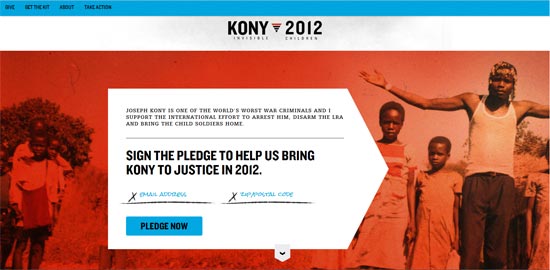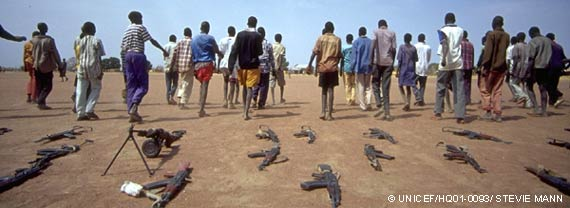George Clooney is arrested after protesting outside the Sudanese embassy in Washington D.C. “He was the calmest detainee I´ve ever seen”, declared a witness. It seems to be clear the act was orchestrated and also that it was part of the actor’s effort to draw media attention to the humanitarian crisis in South Sudan. The Nuba mountain are far away, and a humanitarian crisis is not fashionable enough for the audience. So Clooney is using his fame to put the humanitarian Sudanese crisis into the spotlight. Before him, other Hollywood stars did the same: Sean Penn, Daryl Hannah, Tim Robbins, Susan Sarandon or Martin Sheen are just a few names.
 But beyond the headlines and the celebrities another phenomenon has appeared on the stage: the social networks and their viral “infection”. Facebook, Twitter, Flicker are powerful weapons serving the Citizen Journalism, helping people all over the world to share information and to protest against cruelty. These tools -plus an intense feeling of outrage- made possible both the Arab Spring as the Spanish Revolution. Or the live-twitted Osama Bin Laden´s killing by a Pakistani man named Sohaaib Athar. Even the few journalists that went in the Syrian city of Homs shared with the readers the barbarities they witnessed thanks to Twitter. In this 2.0 world everybody can convey whatever they please to a global audience at unprecedented levels.
But beyond the headlines and the celebrities another phenomenon has appeared on the stage: the social networks and their viral “infection”. Facebook, Twitter, Flicker are powerful weapons serving the Citizen Journalism, helping people all over the world to share information and to protest against cruelty. These tools -plus an intense feeling of outrage- made possible both the Arab Spring as the Spanish Revolution. Or the live-twitted Osama Bin Laden´s killing by a Pakistani man named Sohaaib Athar. Even the few journalists that went in the Syrian city of Homs shared with the readers the barbarities they witnessed thanks to Twitter. In this 2.0 world everybody can convey whatever they please to a global audience at unprecedented levels.
Kony2012: more cons than pros
That´s what happened to Kony2012, the video launched by the American charity “Invisible Children”as part of a campaign -whose logo is astonishingly reminiscent of that of Emporio Armani- aimed at arresting and bringing under justice Robert Kony, an Ugandan warlord and leader of the Army of the Lord. Almost 100 million of people have watched and shared it through the Net. “Nothing is more powerful than an idea whose time is now”, you can read at the opening. An amazing production, the commercial-Coke-look-like appearance along the cultural heavyweights´ support from their Twitter accounts such as Oprah Winfried, Angelina Jolie or Lady Gaga are the keys of this incredible success. But the truth is that from the whole 28 minutes´ footage only three are devoted to depicting shallowly, without any background at all, the soldier child´s situation in Uganda. The master stroke is given by the Ugandan child mourning inconsolably his brother´s death while fading into black.
 Along with the millions of followers, Kony2012 has also ignited fierce criticism. The current Ugandan PM, Amama Mbabazi, has slammed on a video response in Youtube–same media, same expected results – the view given by “Invisible Children”. “We don´t need a video for us to take notice on the grief caused by Kony to the Ugandan people”, states crossly. “I contacted each of those 20 international celebs and invited them to visit Uganda”, adds Mbabazi. Some African NGO´s, as the World Peace Foundation and his director Alex de Waal, go beyond. “I have a number of concerns about the impact of simplistic and paternalistic portrayals of African problems, in which Africans are treated as children waiting for Americans and Europeans to save them. I have concerns about military action being presented as the principal solution”, declares. They are working for peace in Uganda combining military and non-military solutions. From these lasts are remarkable the reconciliation efforts, the comprehensive dialogue and the “Disarmament, Demobilization and Reintegration Initiative”.
Along with the millions of followers, Kony2012 has also ignited fierce criticism. The current Ugandan PM, Amama Mbabazi, has slammed on a video response in Youtube–same media, same expected results – the view given by “Invisible Children”. “We don´t need a video for us to take notice on the grief caused by Kony to the Ugandan people”, states crossly. “I contacted each of those 20 international celebs and invited them to visit Uganda”, adds Mbabazi. Some African NGO´s, as the World Peace Foundation and his director Alex de Waal, go beyond. “I have a number of concerns about the impact of simplistic and paternalistic portrayals of African problems, in which Africans are treated as children waiting for Americans and Europeans to save them. I have concerns about military action being presented as the principal solution”, declares. They are working for peace in Uganda combining military and non-military solutions. From these lasts are remarkable the reconciliation efforts, the comprehensive dialogue and the “Disarmament, Demobilization and Reintegration Initiative”.
Manipulation and archetypes
 As if in a Philip K. Dick´s novel, Kony2012 has been replied by Anonymus in the same battlefield: the Net. Addresing to the “citizens of the world”, they say that Invisible Children is using this “video-propaganda” as a “brainwashing experiment” in order to support “the USA military invasion to steal the Ugandan oil”. “What Invisible Children is not able to prove to the public is where their money is going to”, they add.
As if in a Philip K. Dick´s novel, Kony2012 has been replied by Anonymus in the same battlefield: the Net. Addresing to the “citizens of the world”, they say that Invisible Children is using this “video-propaganda” as a “brainwashing experiment” in order to support “the USA military invasion to steal the Ugandan oil”. “What Invisible Children is not able to prove to the public is where their money is going to”, they add.
Long is the list of experts in communication that have warned of the manipulation contained at the video, and of simplifying of child soldier problem by reducing it to an archetype of “white saves black”. On the other hand, Amnesty International USA subscribes to the critics targeting the message –since the real goal is Kony facing due process in a competent court- but not the means. “Why don´t use them to encourage people to act, for instance, against what is happening in Syria right now?” wonders the Human Rights organization. In fact, AI was one of the first in using cyber-activism.
But the Kony2012´s plea is neither addressed to the ICC- not signed yet by the USA despite of the ICC prosecutor Luis Moreno´s presence in the video – nor the UN, neither the governments of the four countries involved in this -Uganda, South Sudan, DRC and Central African Republic- but the USA congressmen, social prescribers and American people. “If people are not interested in it, the government won´t send its advisers to came into the dense jungle to seek Kony”. Naturally Barak Obama heeded the appeal: in October 2011 a hundred soldiers were sent to “oversee” the area and “help the Uganda army in Robert Kony´s detention”. This event is perceived by the Invisible Children´s staff and supporters as a victory in the name of “what is right” against the other military actions taken by the EEUU army, classified in the video as “self-defense”. But what they don’t tell about is a similar attempt to catch this killer backfired three years earlier. In revenge Joseph Kony slaughtered hundreds of civilians, including women and children.
Message and audience: the advantages of being viral
Journalists and HR workers have been raising their voices for years against this tragedy with any visible result. The journalist and ex-missionary Jose Carlos Rodriguez Soto related on his blog, “I remember many sleepless nights spent in the mid 90’s with my old Olivetti typing accounts of atrocities and lists of abducted children who later were sent to embassies and UN offices but we met with the most absolute silence finally”. So where does it lay the Kony2012´s success?.
As the tech specialist Delia Rodriguez wrote in El País, “Kony is the memetic propaganda´s –a meme is a cultural unit that human beings spend the day sharing among us- greatest hit. Kony is made to activate all the viral springs and urge us to pass around”. Regarding Visible Measures, is the video campaign with the faster growth in history.
Even more, it fundraised $5 million only in the first 48 hours –currently the Action Kit is sold out-. And this whirl has affected not only the video itself but the articles generated, either in favor or against.
Despite the lights and shadows, this 2.0 era phenomenon have put the child soldiers issue back on the global agenda as David Smith highlights in the Guardian Development section and have triggered the remittance of 5,000 soldiers under the UN and AU´s flag. But, for how longer? The toda´s Twitter´s trendy topic is tomorrow´s oblivion. The use of social networks is steadily driving news to be more ephemeral than ever. And given that the chance for saving any kind of file in different devices exists, we are using our memory brain lesser and lesser. Will we recall these children and their grief tomorrow?
This is a nonprofit explanation.







